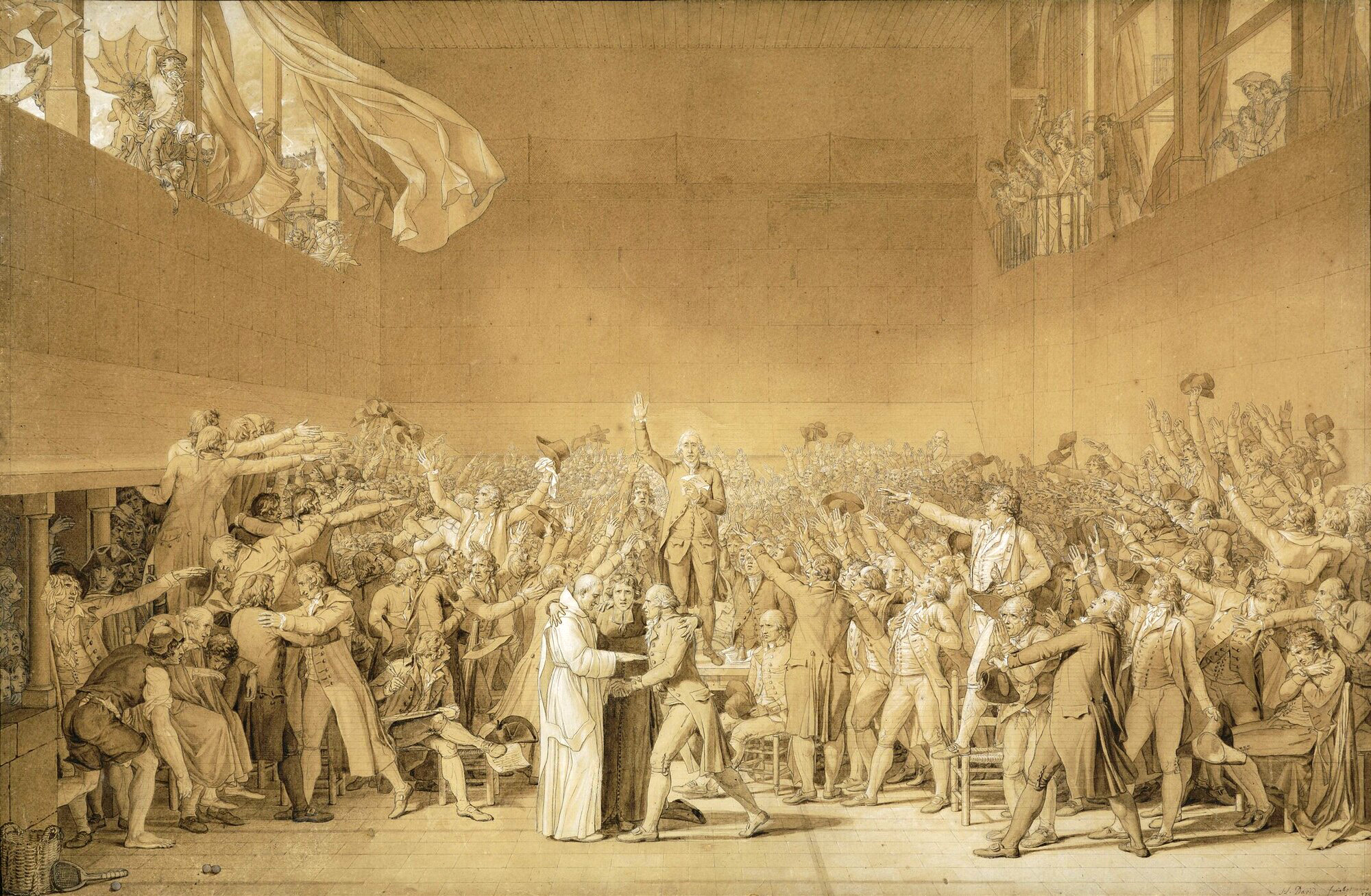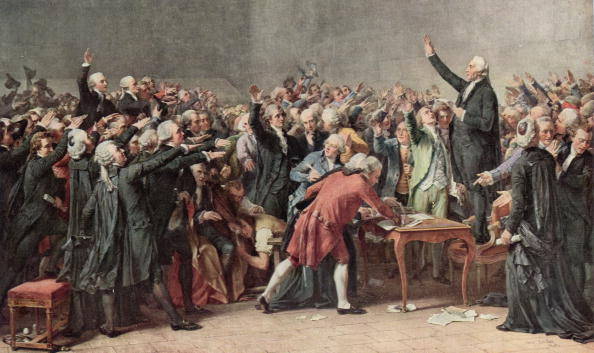Tennis Court Oath
The Tennis Court Oath on June 20, 1789 praised the deputies of the Third Estate of the French Estates-General in Versailles, not to disperse before they had given France a constitution. The oath was made in a makeshift meeting hall, a ball sports hall and was one of the crucial events at the beginning of the French Revolution.
Prehistory
To correct a severe financial crisis of the state, King Louis XVI. convened the Estates General, which met in May 1789 the first time in 175 years.
Clergy, nobility, Third Estate - - According to the customs of the Estates-General the collective voices of the three estates came to the same weight. The representatives of the Third Estate, which had previously been enforced to provide twice the number of representatives, now claimed, a new voting method - counting by headcount - to introduce what would correspondingly increase their voting weight. They justified this by saying that they represented approximately 98 percent of the population.
After the application of the Third Estate were repeatedly rejected, they agreed on 17 June to the National Assembly. Thus, they claimed to represent the entire French nation. To prevent further meetings of the deputies, the King ordered the closure of its meeting room in the Palace of Versailles. The pretext given was craftsman should prepare the hall for a joint meeting of all three estates.
The Oath
On June 20, 1789, went to members of the National Assembly, which had in the meantime also joined some representatives of the clergy, the first object, without further ado to the Salle du Jeu de Paume, Versailles. There she swore now, " to never part, until the State has a constitutional [ ... ] and only the power of bayonets too soft ". With this oath they declared themselves to the Constituent Assembly.
The king gave their pressure finally on June 27 in 1789 and admitted them to sit as a representative of the nation instead of the Estates General. To the Members of the 3rd and many more of the 1st and 2nd Level on July 9, 1789 formed the Constituent National Assembly, should be the coordinated not by items, but per capita basis. Since the subsequent approval of the king came about only under pressure, the Tennis Court Oath is considered - after the declaration of 17 June - as the second revolutionary step that is no longer carried in the regulatory framework of the ancien regime. The so- trodden path eventually led to the overthrow of the monarchy.










